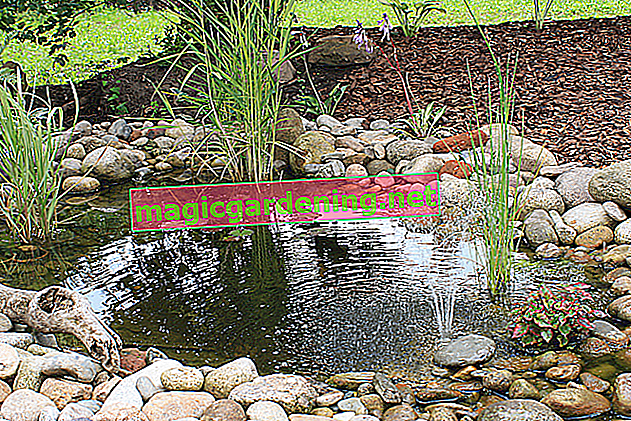
materials
Pond liners can be made of different materials. The most common are:
- PVC
- PE and
- EPDM, a special rubber-based material
also read
- Laying pond liner: why the temperature is crucial
- Pond liner for a raised bed - what is suitable?
- Dispose of pond liner - this is how you do it right
There are also some special foils made from special geotextiles, which are rarely used and are practically not used at all in private horticulture.
PVC films
PVC films have the most disadvantages of the film types:
- the foils generally show a very critical environmental balance when used
- the disposal of PVC is ecologically extremely questionable
- Over time, plasticizers evaporate into the water (although many films today at least do not emit any highly toxic substances)
- PVC pond liners are not well suited for living things in the pond
- the shelf life of the film is limited (plasticizers evaporate, the film becomes brittle and leaks
- after a few years it can be difficult to carry out repairs due to the lack of plasticizers and the brittle film
Despite the disadvantages, the PVC film is clearly the most frequently used film on the market and also in professional landscaping. Nowadays, “sandwich foils” made of different materials are often used in order to improve the properties at least a little bit - but it doesn't quite work.
What speaks as an advantage for the PVC film is only the (significantly) cheaper price. PE foils have a slightly better balance than PVC foils, at least in terms of environmental technology. The other properties are only slightly better.
EPDM foils
EPDM is a synthetic rubber material (ethylene-propylene-diene-M group). It has some interesting properties, including high weather resistance. In addition, some other properties are also interesting for pond construction:
- the overall high durability of the film (up to 50 years, sometimes up to 20 years warranty is given on the film)
- the high elasticity (even at low temperatures and up to 300% elasticity)
- the very high ozone and UV resistance of the film
- good environmental compatibility (harmless to people and living things in the pond)
- the easy repair
Due to their properties, EPDM foils can be made into very large formats, even roll goods up to 15 m wide and 61 m long can be bought ready-made, which makes seamless lining even very large ponds possible.
EPDM or PVC
The question of EPDM or PVC actually already answers itself due to the properties. PVC films only have an advantage if price plays a decisive role.
Thickness of pond liner
The right thickness of the film is crucial in the selection. Depending on the depth, the following thicknesses are approximately suitable (see table below)
| Pond depth | recommended film thickness |
|---|---|
| up to 70 cm | 0.5 mm |
| 70 cm - 160 cm | 1.0 mm |
| larger than 160 cm or swimming pond or fish pond | at least 1.5 mm |
In the case of problematic soil conditions, a pond fleece with a 5 cm high layer of sand underneath should definitely be used to protect the liner . In such a case, a film with a thickness of at least 1 mm, preferably 1.5 mm, should always be used.
Tips
EPDM foils are also used for flat roof sealing because of their good properties.








